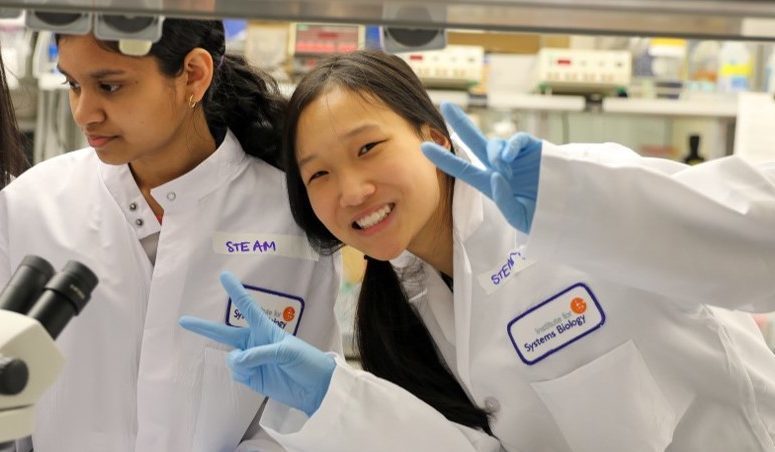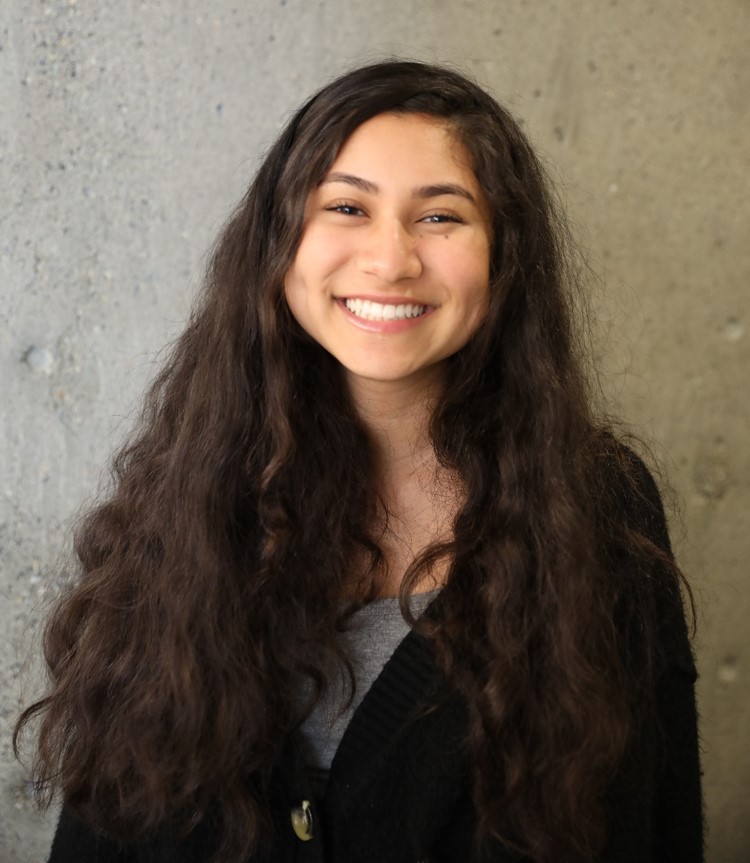STEAM Towards a Healthier World

Keila Mohan
Hazen Senior HS, WA
Senior (2019-2020)
 Career Goals:
Career Goals:
For most of my life, working in medicine and honing the ability to impact others' lives in such an expansive way has been a passion of mine. Although I am not entirely sure what career pathway I plan to pursue, I am confident I will be working with biological research and medicine in some capacity. I am passionate about the many human body systems and learning ways to develop treatments that can manipulate our natural processes. This course in particular showed me the wide array of career options I have that I was completely unaware of, especially careers that combine healthcare and the arts. The various professionals I met inspired new possible pursuits I had never considered, such as microbiology, bioinformatics, computational biology, etc.
What did you learn from this course?
I learned so much about the positive changes that are being made to our current healthcare system, and ways in which my generation of future professionals can reform even more of the problems that we are facing. For instance, much of our course emphasized the significance of proactivity in wellness and healthcare. Our healthcare system narrowly focuses on treating illness after the fact, rather than seeking ways to maintain health and prevent the development of illness. Healthcare has become extremely costly as well, and treatment has become a luxury, as a result of the relationships between insurance companies and patients. Healthcare must prioritize the health of the individual, and not the monetary acquisitions of the individual.
What advice do you have for future Ambassadors?
Talk to people. I am relatively shy myself, however, this experience forced me to talk to other Ambassadors and professionals that I can look up to. It allowed me to meet people with their own stories and life experiences I can learn from, and made my time during this program enjoyable. Have an open-mind, but don't be afraid to question what you are told, because asking questions is the best way to understand concepts. And lastly, be thankful for every educational opportunity you receive.
– Showcase Project –
"Cardiovascular Disease Infographic: Is Your Heart At Risk?"
Who/What inspired this project?
Heart disease runs in my dad's side of the family, and for much of my life I didn't know what it was. However, after diving into this course and its emphasis on preventive treatment, I found that cardiovascular (heart) disease (CVD) is most commonly a consequence of environmental and behavioral sources. Heart disease is extremely common, being the leading cause of death in both men and women in the US, with 25% of deaths being a result of CVD. This further probed me to seek an artistic format where I can educate any passerby about their personal risks of developing heart disease, and how they can begin proactively controlling their own health.

How does your project communicate the relationship between the environment and health?
I am a visual learner. Therefore, I knew I wanted to create a project that was visually pleasing to the eye, while still containing a lot of information beneath the surface. I find that I am much better at graphic design and using computers to create art, so I decided to create an educational infographic. By using pictures, I tried to illustrate the biological correlations between outside factors, such as one's eating or smoking habits, to one's health and possible risk of disease. I placed these environmental factors at the top to catch the audience's attention, and ended my poster with ways to prevent cardiovascular disease, to elicit a form of comfort in knowing that anyone can decrease their risk themselves.
Who is your target audience?
My target audience members are middle-aged adults (40-65 years old), who obtain one of the many risks of heart disease (high cholesterol, high blood pressure, genetics, obesity, poor lifestyle choices, diabetes). Although any individual can be considered an audience for my infographic, I wanted to focus on those that are at the age where they are at the highest risk of developing heart disease, and have the highest potential to reverse this.
I considered a variety of identifiable groups, and came to the realization that my target audience should be those who would benefit the most from the information I am providing. Even though there are a myriad of biological differences between men and women, heart disease generally impacts a similar number of men and women, so I decided to widen the audience to all adults. I also considered age, and since cardiovascular disease is usually fully developed by the age of 65, I realized that those at highest risk are adults that are nearing this age. Despite targeting this specific group of middle-aged adults in the population, I believe proactivity should be a constant, and hope that anyone reading my infographic will feel inclined to improve their lifestyle for the better. This can be done by simply exercising, dieting, and/or limiting stress inducers.
As an Ambassador, how do you plan to share your message with your target audience?
Being an Ambassador for healthcare and wellness, I plan to continue actively seeking medias in which I can educate people about their bodies and health. Conversations themselves are the key to change; by simply talking to people and starting conversations where knowledge can be flowed both ways, I can inform others of proactive healthcare and help them develop their own opinions on health.

